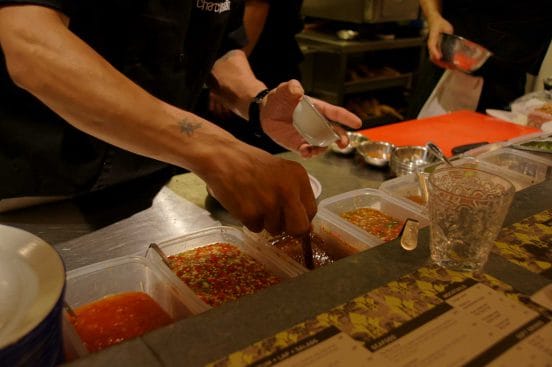Spice rubs and curries and similar concoctions that mix-and-match (or mix-and-contrast, actually) diverse pungent and aromatic ingredients have been around for a long time.

They do get used with ingredients, especially rice, that would not have quite as much flavor by themselves. Sure.
These days, however, it is unfortunately popular to see chilli as a very individual pursuit.
In the eating, then, it’s all “I’ll just pour my favorite hot sauce over everything and it’s good.”
In the production of such sauces, it’s all “I’ll just add ‘the hottest peppers’ and it will sell better (and be cheaper to make).”
These attitudes show only this:
Where chile peppers are not major ingredients in and of themselves, we tend not to know how to cook with chilli.
And that is the case pretty much anywhere other than parts of China and India and Mexico, especially in ‘the West’.
By the way, if you want to see and hear me “preach” it, here you go:
There, in “the West”, there also tend to be only few people in a family who like their food hot and spicy.
Thus, the popularity of hot sauces and chile pepper salts, all so that the one person who wants things hot can add their favorite sauce or salt over the bland(er) food that everyone is eating.
It certainly doesn’t help that the attitude of many Western chileheads is that of certifiable hotheads. When they use chilli, they use so much of it that it becomes painful, making their food inedible to anyone else.

Randomly pouring chile pepper sauces or salts over finished foods, however, is an act of ignorance.
There are flavors and aromas and pungencies to both the foods and the various kinds of chilli that should be combined as they complement and contrast each other well in the cooking, creating the pungencies and flavor profiles desired in the finished dishes.
Sure, cheaply-made “foods” out of corporate laboratories only have an everyman’s taste made for nothing but increasing consumption.
Well prepared, however, the result should be a dish that everyone is able to eat – or that has a pungency everyone can learn to like.
And if not, just add another dish for those who can’t eat the one that is too spicy for their palate.
Do not just randomly spice up dishes that shouldn’t be spicy, though. The cook, whether that’s the master chef or the man on the kitchen range or the housewife or the celebrity cook, made the dish the way it is supposed to be after all. At least, I’d hope so.

All the worse when dishes get randomly spiced up with a chile pepper sauce that contributes aromas that are totally different.
An habanero-mango sauce may suit a Jamaican barbecue, but it does not belong anywhere near any kind of East Asian cooking, for example.
It doesn’t matter how tasty and flavorful you found that sauce when you had nothing to try at some market stand but that; it is and remains an ignorant way of approaching the chilli. And food.
So, let’s learn – and let’s cook with the chilli, the way it should be done and the way it fits!

Leave a Reply
You must be logged in to post a comment.